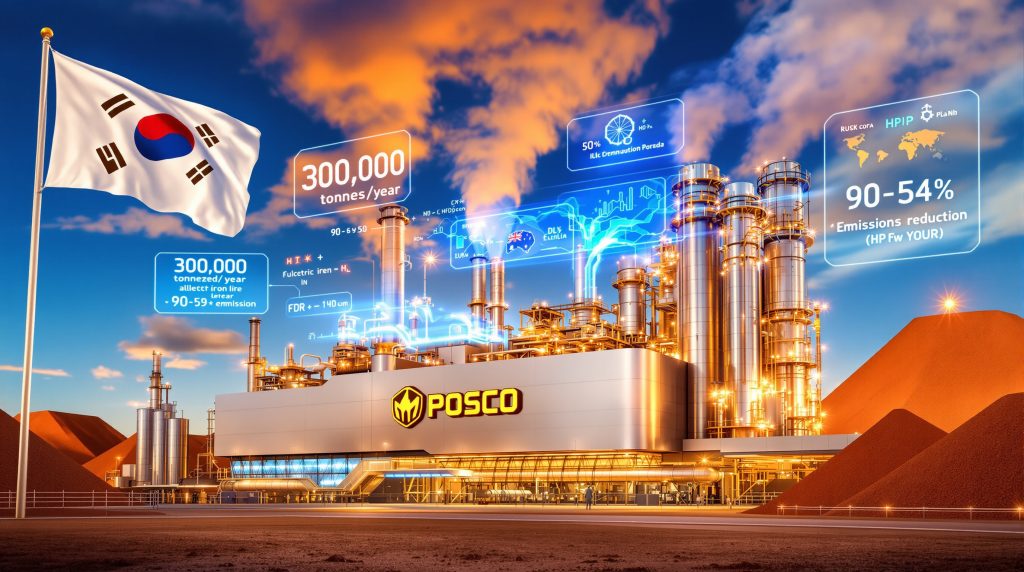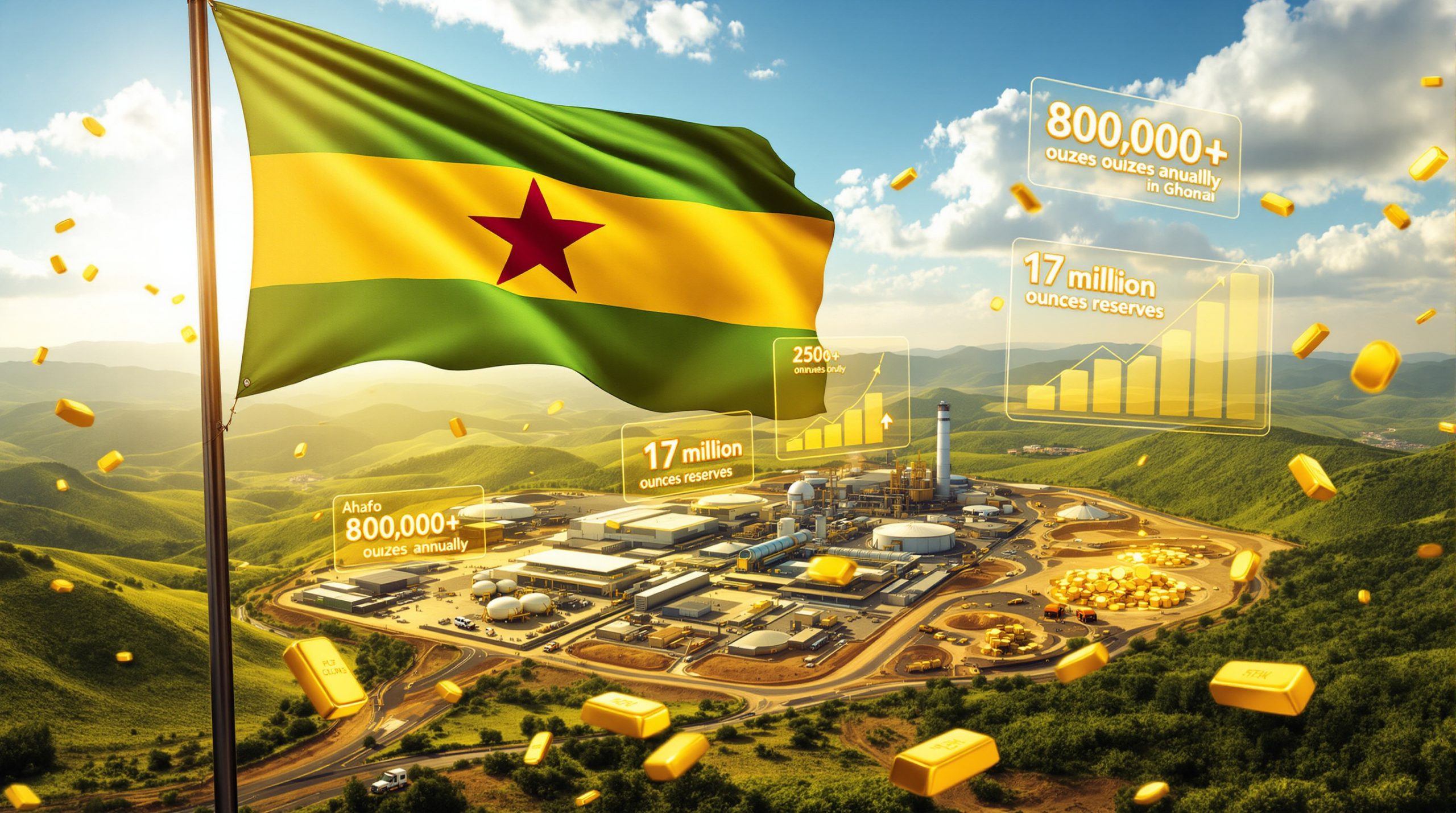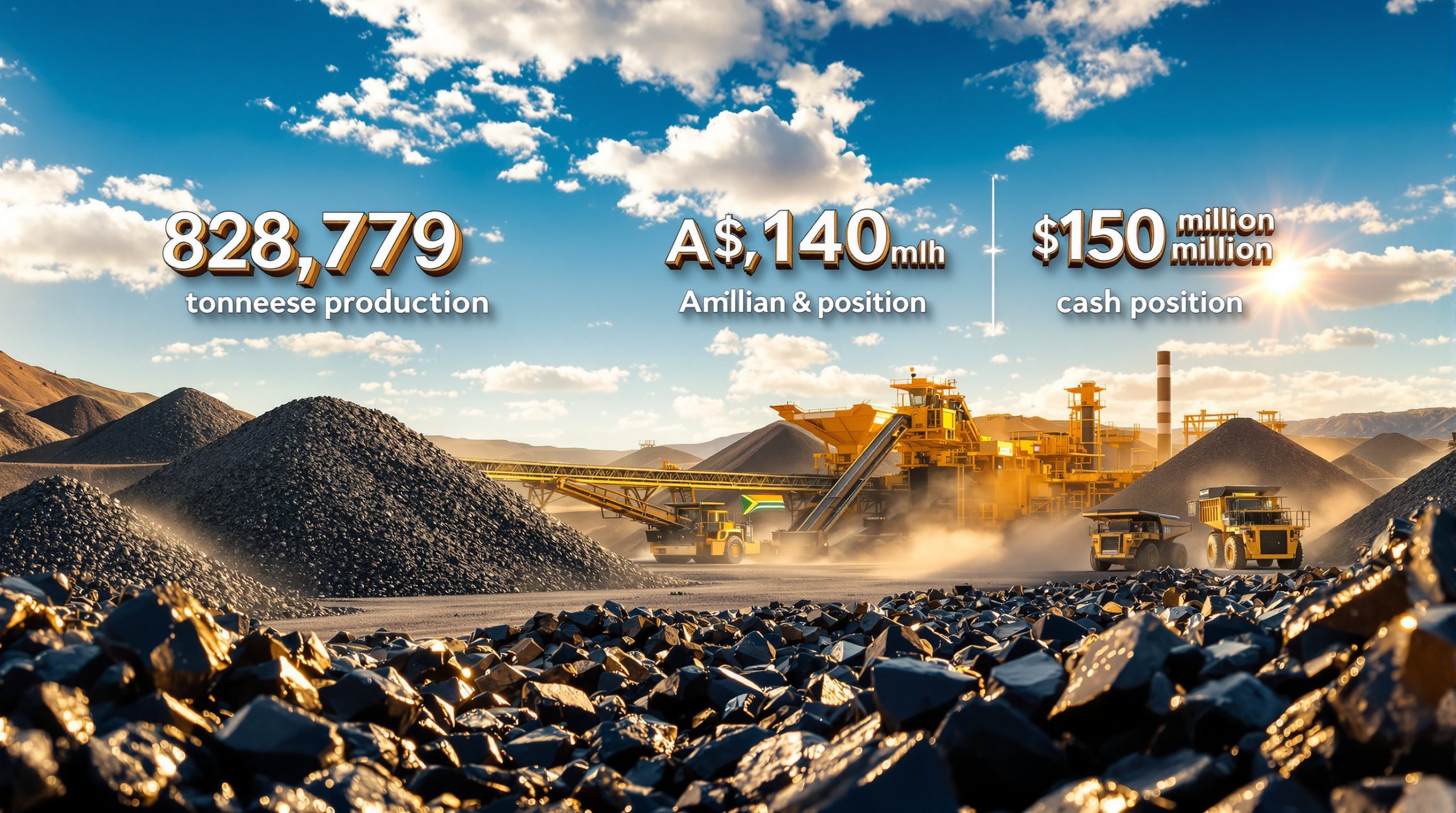The Revolution in Steel Manufacturing: How Hydrogen Technology is Reshaping Industrial Emissions
The global steel industry faces an unprecedented challenge in reducing its massive carbon footprint. Traditional steel production generates approximately 2.3 tons of CO2 per ton of steel produced, making it one of the world's most carbon-intensive manufacturing processes. With growing pressure from climate regulations and corporate net-zero commitments, the industry desperately needs transformative solutions.
This environmental crisis has catalysed innovation in steelmaking technology, with hydrogen-based reduction emerging as the most promising alternative to conventional coal-dependent processes. The recent partnership between BHP and POSCO partner on near zero emissions technology represents a pivotal moment in this technological revolution, potentially unlocking pathways to near-zero emissions steel production.
The collaboration centres on POSCO's groundbreaking HyREX (Hydrogen Reduction Ironmaking) technology, which promises to eliminate the sintering and coking processes that contribute significantly to steel industry emissions. Construction of a demonstration plant with 300,000 tonnes annual capacity is set to begin at Pohang Steelworks, with commissioning targeted for early 2028.
Understanding HyREX Technology's Revolutionary Approach
The Science of Hydrogen Reduction
Traditional blast furnace steelmaking relies on coal and coke to reduce iron ore at temperatures exceeding 1,500°C, releasing massive amounts of CO2 in the process. HyREX technology fundamentally transforms this approach by substituting hydrogen for carbon-based reducing agents.
The chemical reaction is elegantly simple: hydrogen + iron ore = iron + water vapour. This process eliminates CO2 emissions at the source, producing only water vapour as a byproduct. Operating at temperatures between 700-900°C, hydrogen reduction requires significantly less energy than traditional blast furnaces.
The technology eliminates two major emission sources in conventional steelmaking:
• Sintering processes that agglomerate iron ore fines
• Coking operations that convert coal into metallurgical coke
• Direct reduction reactions that traditionally rely on carbon monoxide
Technical Architecture of the HyREX System
The HyREX system integrates two critical technological components:
Fluidised Bed Reactors (FBR) optimise hydrogen contact with iron ore particles through controlled fluid dynamics. The fluidized bed design ensures uniform temperature distribution and maximises hydrogen utilisation efficiency. POSCO has been developing this hydrogen-based FBR technology at laboratory scale, building on decades of experience with similar reactor designs.
Electric Smelting Furnaces (ESF) convert the reduced iron into liquid steel using electrical energy rather than carbon-based fuel. This pilot-scale technology has shown promising results in POSCO's testing facilities, demonstrating the feasibility of integrating electric smelting with hydrogen reduction processes.
The integration challenges are significant, requiring precise temperature control, hydrogen supply management, and seamless material flow between reactor stages. Furthermore, engineering solutions include advanced process control systems and specialised material handling equipment designed for hydrogen environments.
Strategic Partnership Dynamics Between BHP and POSCO
POSCO's Innovation Heritage
POSCO brings over 20 years of operational experience with innovative ironmaking technologies through its FINEX process development. This background provides crucial insights into scaling alternative reduction technologies from laboratory concepts to commercial operations.
The company has systematically advanced hydrogen-based steelmaking through:
• Laboratory-scale hydrogen FBR technology development
• Pilot-scale ESF process validation
• Integrated system design for commercial applications
POSCO's commitment to constructing a 300,000 tonne annual capacity demonstration plant represents one of the largest investments in hydrogen steelmaking technology globally. The facility will serve as a proving ground for commercial viability assessments.
Strategic Alignment Factors
The partnership leverages several complementary strengths. BHP's Pilbara iron ore offers specific characteristics that may optimise hydrogen reduction efficiency. The ore's chemical composition, particle size distribution, and metallurgical properties require validation through extensive testing protocols.
Timeline coordination is critical, with both companies targeting early 2028 commissioning for the demonstration facility. This aggressive schedule reflects the urgency of steel industry decarbonisation and the competitive advantages of early market entry.
Consequently, the collaboration structure focuses on research and development, performance demonstration, and feasibility evaluation rather than immediate commercial deployment, allowing both parties to validate the technology's potential before larger investments.
Pohang Demonstration Plant Operations and Testing
Facility Specifications and Scale
The Pohang demonstration plant represents a significant scale-up from existing pilot projects:
| Specification | Details |
|---|---|
| Production Capacity | 300,000 tonnes per annum |
| Location | Pohang Steelworks, South Korea |
| Construction Timeline | Beginning soon |
| Commissioning Target | Early 2028 |
| Technology Integration | First facility combining hydrogen FBR with ESF at scale |
This facility will be the first in the world to integrate hydrogen-based fluidised bed reactor technology with electric smelting furnaces at commercial demonstration scale. The plant's design incorporates lessons learned from POSCO's existing FINEX operations and pilot-scale ESF development.
Iron Ore Testing Protocols
BHP's Pilbara iron ore will undergo comprehensive testing to validate its suitability for hydrogen reduction processes. The testing protocols evaluate:
• Reduction kinetics at various hydrogen concentrations
• Temperature sensitivity across operational ranges
• Particle behaviour in fluidised bed conditions
• Metallurgical performance in downstream processing
Performance validation methodologies will assess production efficiency, product quality, and operational stability. For instance, feasibility assessment criteria include economic viability, technical reliability, and scalability potential for larger commercial facilities.
Environmental Impact and Decarbonisation Potential
Emissions Reduction Analysis
The environmental benefits of HyREX technology are substantial compared to conventional steelmaking methods. Understanding these mining decarbonisation benefits is crucial for the broader transformation of resource-intensive industries.
Traditional blast furnace steelmaking generates approximately 2.3 tons of CO2 per ton of steel through multiple emission sources including coking, sintering, and iron reduction reactions. These processes are inherently carbon-intensive due to their reliance on fossil fuel-based reducing agents.
HyREX technology targets near-zero direct emissions by eliminating carbon-based reducing agents. The primary byproduct is water vapour rather than CO2, representing a fundamental shift in steelmaking chemistry. Lifecycle assessments must consider indirect emissions from hydrogen production, electricity generation, and raw material processing.
The technology's emission reduction potential depends heavily on the hydrogen supply chain. Green hydrogen produced from renewable energy sources enables truly carbon-neutral steel production, whilst blue hydrogen from natural gas with carbon capture provides significant but not complete emission reductions.
Industry-Wide Transformation Implications
The successful demonstration of HyREX technology could catalyse broader steel industry transformation. BHP's 2050 net-zero operational emissions target aligns with growing industry pressure for decarbonisation solutions.
Global supply chain impacts extend beyond steel production to include:
• Downstream manufacturing benefiting from low-carbon steel inputs
• Construction and automotive sectors meeting sustainability targets
• Infrastructure development with reduced carbon footprints
Moreover, this development aligns with broader energy transition essentials that are reshaping global industrial processes.
Comparative Analysis of Steel Decarbonisation Technologies
The steel industry is pursuing multiple decarbonisation pathways, each with distinct advantages and limitations:
| Technology | Emissions Reduction | Commercial Readiness | Capital Requirements | Operational Challenges |
|---|---|---|---|---|
| HyREX (Hydrogen-based) | 90-95% | Demonstration phase | High | Hydrogen supply reliability |
| Carbon Capture (CCUS) | 60-80% | Pilot projects | Very High | Storage infrastructure needs |
| Electric Arc Furnaces | 70-85% | Commercial | Moderate | Scrap steel availability limits |
| Biomass Integration | 20-40% | Limited trials | Low-Moderate | Sustainable biomass sourcing |
Hydrogen-based steelmaking offers the highest emission reduction potential but requires significant infrastructure development for reliable hydrogen supply. Carbon capture technologies can retrofit existing facilities but involve complex storage and transport systems.
Electric arc furnaces provide immediate emission reductions for steel recycling but cannot replace primary steelmaking from iron ore. However, biomass integration offers incremental improvements but faces sustainability constraints on feedstock availability.
Investment Opportunities and Market Dynamics
Market Scale and Growth Projections
Global steel production exceeds 1.9 billion tonnes annually, representing an enormous market for decarbonisation technologies. The hydrogen steel market is projected to experience rapid growth as regulations tighten and corporate sustainability commitments drive demand.
Premium pricing expectations for low-carbon steel reflect growing willingness to pay for sustainable materials. Early market research suggests price premiums of 10-20% may be sustainable for certified low-carbon steel products, particularly in high-value applications.
Investment opportunities span the entire value chain:
• Technology development and licensing arrangements
• Hydrogen production and supply infrastructure
• Specialised equipment manufacturing for hydrogen steelmaking
• Project financing for demonstration and commercial facilities
Supply Chain Transformation Requirements
Australian iron ore producers are well-positioned to capitalise on hydrogen steelmaking growth due to their high-quality ore characteristics and established relationships with Asian steel producers. The shift toward hydrogen reduction may favour certain ore grades that optimise reduction kinetics and energy efficiency.
Furthermore, renewable energy solutions are essential for creating the green hydrogen necessary for truly carbon-neutral steel production.
Port facilities, pipeline networks, and hydrogen storage terminals represent significant infrastructure investment opportunities supporting the transition to low-carbon steel production.
Technical and Economic Challenges
Scaling and Operational Hurdles
The transition from pilot-scale testing to commercial production presents numerous technical challenges:
Process optimisation for different ore grades requires extensive testing to establish optimal operating parameters for various feedstock characteristics. Each ore type may require specific temperature profiles, hydrogen flow rates, and residence times.
Hydrogen supply chain reliability represents a critical operational risk. Consistent hydrogen quality, pressure, and availability are essential for stable steel production operations. Supply disruptions could halt production and compromise product quality.
Scaling complexity from pilot to commercial scale often reveals unexpected engineering challenges. Heat transfer, mass transfer, and fluid dynamics behaviour may change significantly at larger scales, requiring design modifications and operational adjustments.
Economic Viability Considerations
Capital expenditure requirements for hydrogen steelmaking facilities significantly exceed traditional blast furnace investments. The demonstration plant represents a substantial financial commitment before commercial viability is proven.
Operating cost competitiveness depends heavily on:
• Hydrogen pricing compared to metallurgical coal
• Electricity costs for electric smelting operations
• Operational efficiency achieving target production rates
• Maintenance requirements for specialised equipment
Consequently, carbon pricing mechanisms and regulatory support may be necessary to achieve economic parity with conventional steelmaking methods during the technology's commercial development phase.
How Can Technology Innovation Drive Decarbonisation?
The BHP and POSCO partner on near zero emissions technology initiative exemplifies how industry innovation trends are reshaping traditional manufacturing processes. This collaboration demonstrates the critical role of strategic partnerships in developing breakthrough technologies.
Technical Performance Indicators
The Pohang demonstration plant will be evaluated against comprehensive performance metrics:
Production efficiency measures include tonnes per hour throughput, energy consumption per tonne, and hydrogen utilisation rates. These metrics determine the technology's commercial viability and scaling potential.
Emissions intensity tracking CO2 equivalent per tonne of steel production validates the environmental benefits and supports carbon accounting for steel customers.
Economic viability assessments compare total production costs with conventional steelmaking methods, including raw materials, energy, labour, and maintenance expenses.
Operational reliability metrics track facility uptime, maintenance requirements, and process stability under various operating conditions.
Commercial Validation Requirements
Market acceptance of hydrogen-produced steel requires validation across multiple dimensions:
• Product quality meeting customer specifications for strength, durability, and processing characteristics
• Supply reliability demonstrating consistent production volumes and delivery schedules
• Cost competitiveness achieving pricing parity or acceptable premiums
• Sustainability certification providing verified carbon footprint data
Scalability assessment evaluates the potential for replicating the technology at larger production facilities and different geographic locations. In addition, integration capabilities with existing steel mill infrastructure determine retrofit potential and investment requirements.
What Are the Future Prospects for Hydrogen Steel Production?
Technology Deployment Timeline
The path to widespread hydrogen steelmaking adoption follows a structured development timeline:
Demonstration Phase (2025-2028): The Pohang facility and similar projects worldwide will validate technical feasibility and operational parameters. Performance data from these plants will inform commercial deployment decisions and technology improvements.
Commercial Deployment (2028-2035): Successful demonstration results will trigger investment in first commercial-scale facilities. Early commercial plants will target premium market segments and regions with favourable regulatory environments.
Widespread Adoption (2035-2050): As costs decline and regulatory pressure increases, hydrogen steelmaking is expected to capture significant market share, particularly for new steel production capacity in developed economies.
Competitive Implications and Market Positioning
First-mover advantages in low-carbon steel production could provide substantial competitive benefits. Companies successfully commercialising hydrogen steelmaking technology may capture premium markets and establish technology licensing opportunities.
Technology licensing partnerships between steel producers and technology developers will likely proliferate as the industry seeks to access proven hydrogen steelmaking capabilities without developing proprietary systems. This trend reflects broader sustainable transformation efforts across heavy industries.
Regulatory compliance positioning becomes increasingly important as carbon border adjustments and emissions regulations create market advantages for low-carbon steel producers. For instance, the BHP and POSCO hydrogen steel development demonstrates how major corporations are positioning themselves for future regulatory requirements.
The BHP and POSCO partner on near zero emissions technology initiative exemplifies the collaborative approach necessary for steel industry transformation, combining raw material expertise with technological innovation to address one of manufacturing's greatest environmental challenges.
Conclusion: Pioneering Carbon-Neutral Steel Production
The collaboration between BHP and POSCO on HyREX technology represents more than a research partnership; it embodies the steel industry's commitment to environmental transformation. By eliminating carbon-based reducing agents and targeting near-zero emissions, this hydrogen-based approach could revolutionise how the world produces one of its most essential materials.
The 300,000-tonne demonstration plant at Pohang Steelworks will serve as a critical proving ground for commercial viability, with implications extending far beyond the two partner companies. Success could accelerate global adoption of hydrogen steelmaking and establish new paradigms for industrial decarbonisation.
The strategic importance of this collaboration extends throughout the global supply chain, from Australian iron ore mining to Asian steel production and downstream manufacturing. As the world pursues net-zero emissions targets, partnerships like this provide essential pathways for heavy industry transformation.
With commissioning targeted for early 2028, the coming years will determine whether hydrogen steelmaking can fulfil its promise of transforming one of the world's most carbon-intensive industries. However, the success of this demonstration could mark the beginning of a new era in sustainable steel production, with potential insights from hydrogen-based steel production analysis providing valuable data for future developments.
"The collaboration between BHP and POSCO represents a pivotal moment in steel industry evolution, potentially unlocking pathways to truly sustainable manufacturing," industry experts note.
Disclaimer: This analysis is based on publicly available information and company announcements. Steel production technologies and market conditions are subject to change. Investment decisions should be based on comprehensive due diligence and professional financial advice. Future performance of hydrogen steelmaking technologies cannot be guaranteed based on current demonstration projects.
Ready to Capitalise on the Next Wave of Industrial Innovation?
Discovery Alert's proprietary Discovery IQ model delivers real-time alerts on significant ASX mineral discoveries across critical metals driving industrial transformation, including those essential for hydrogen production and steel industry evolution. Stay ahead of breakthrough technology developments and begin your 30-day free trial today to position yourself at the forefront of the decarbonisation revolution.




